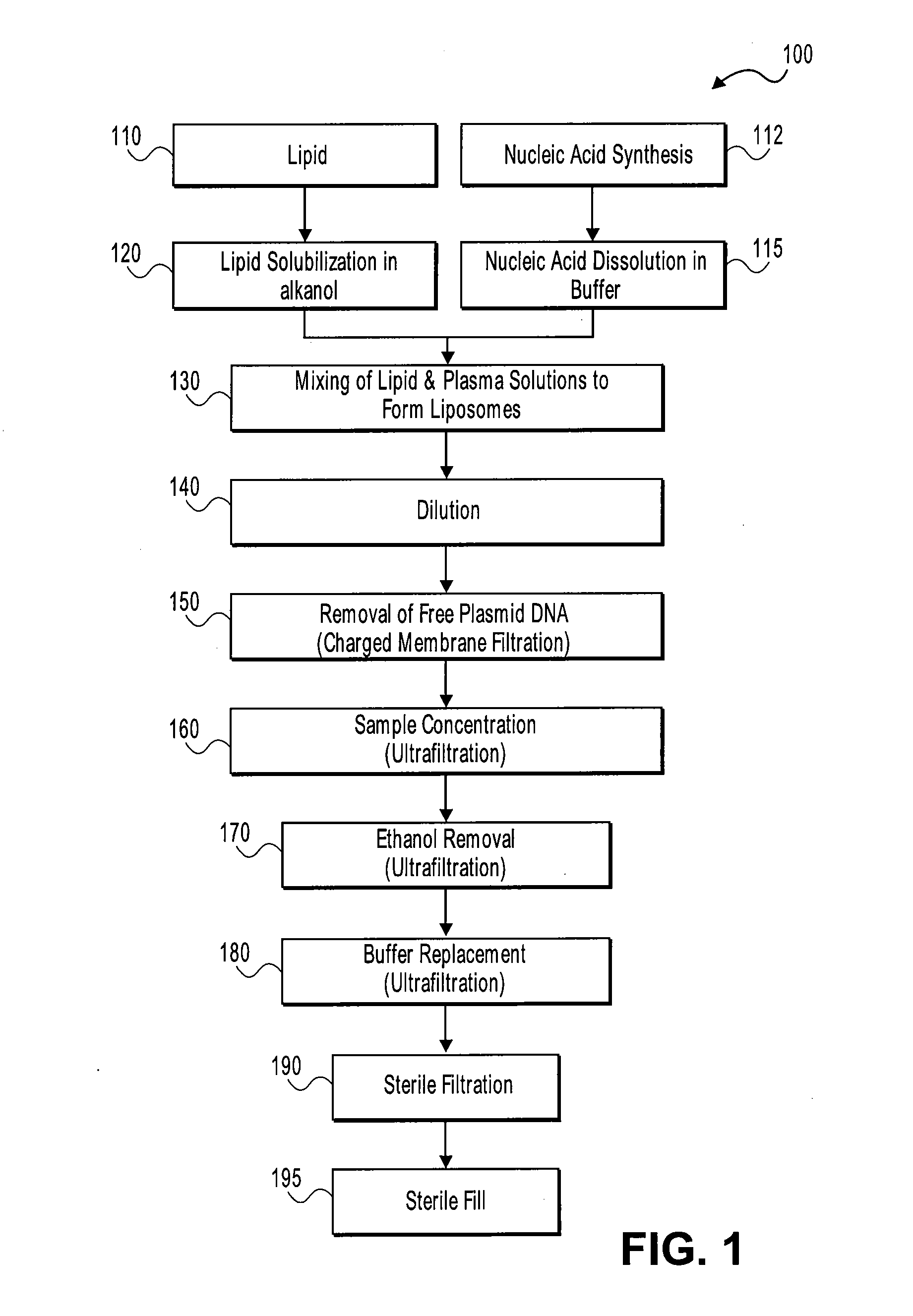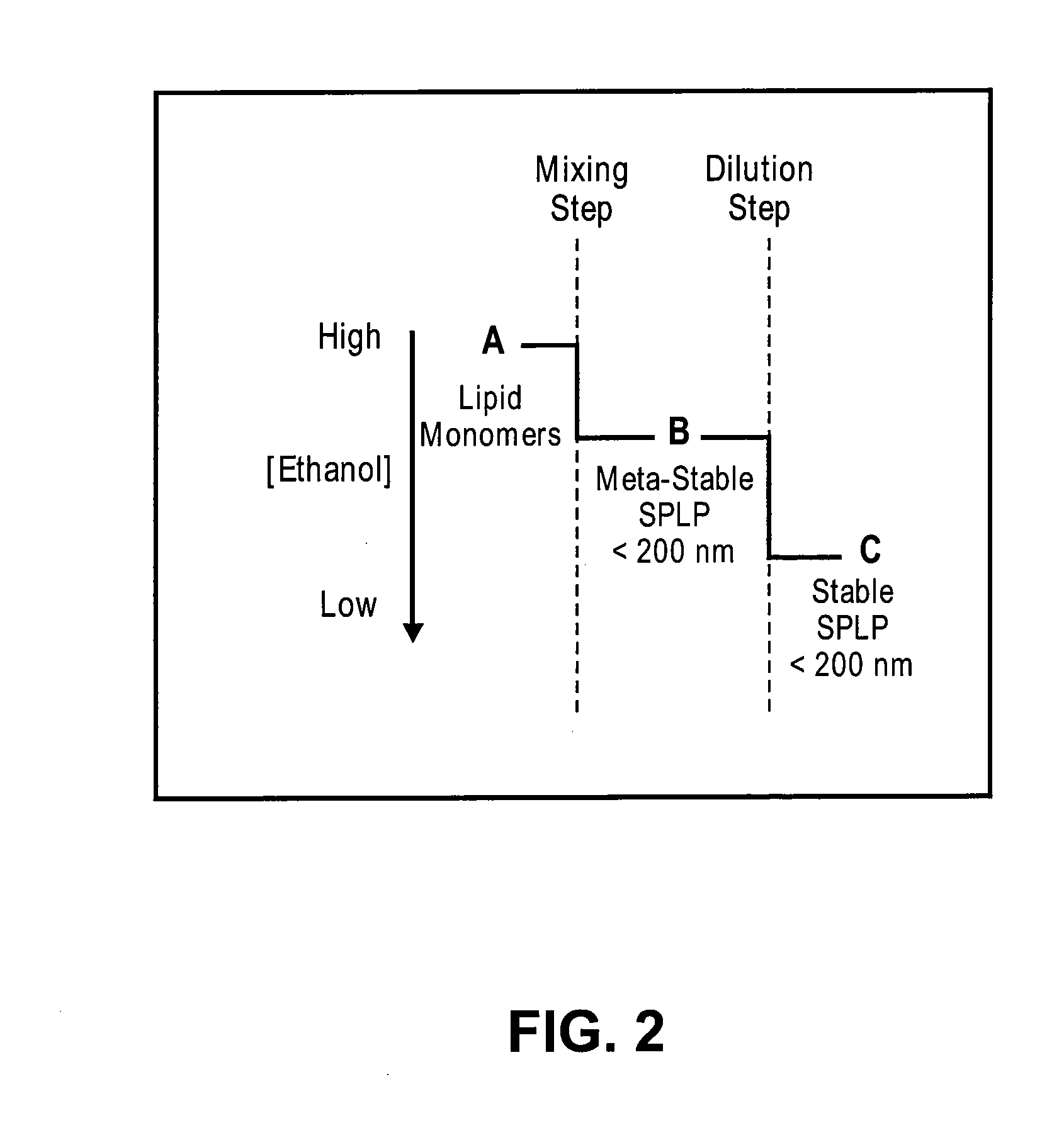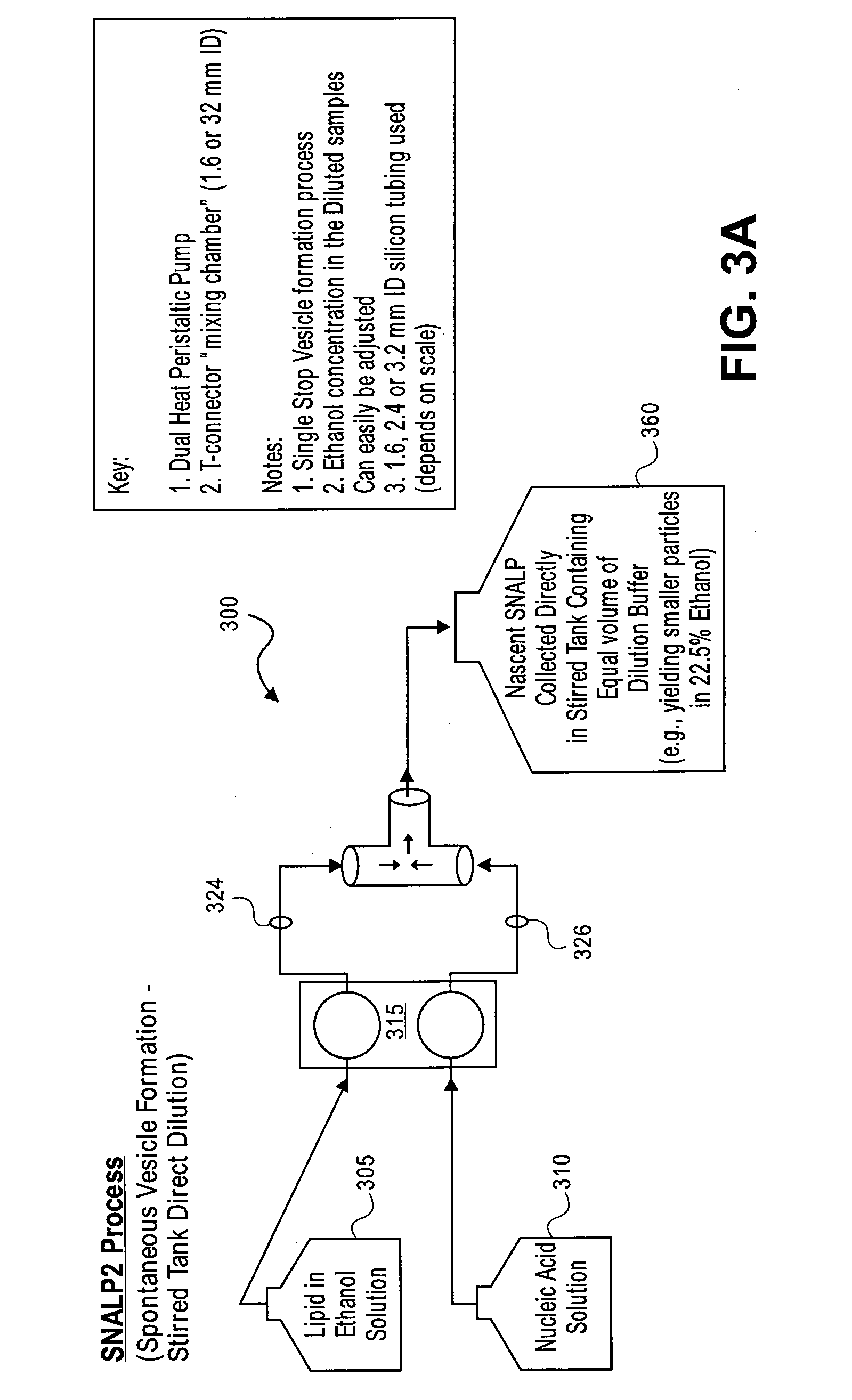Systems and methods for manufacturing liposomes
a technology of liposomes and manufacturing methods, applied in the direction of solvent extraction, drug compositions, separation processes, etc., can solve the problems of short half-life in the bloodstream, inability to easily scale up the method for mass production of large volumes of liposomes, and dephospholipid raw materials and encapsulated drugs
- Summary
- Abstract
- Description
- Claims
- Application Information
AI Technical Summary
Benefits of technology
Problems solved by technology
Method used
Image
Examples
example 1
Comparison of Prior Method with Direct Dilution Process
[0088] SNALP are composed of 2 mol % PEG-C-DMA, 30% DlinDMA, 20 mol % DSPC and 48 mol % Chol″ WATSON MARLOW PUMP—MODEL 505 Di / L:
-> Nucleic Acid: unmodified siRNA (re-constituted in 0.9% NaCl) (0.225 mg / ml siRNA)
-> Mixing Volumes: 10 mL of nucleic acid+10 mL of lipid-ethanol solution (5 mM lipid)
->1.6 mm tee connector, 3.2 mm tubing, 40 cm tubing length per channel
-> Flow Rate: 200 mL / min
Conditions:
1. Mixed nucleic acid with lipid, then diluted SNALP using pump after incubation delay (prior method).
2. Mixed nucleic acid with lipid, then diluted SNALP using pipette to add buffer
3. Mixed nucleic acid with lipid directly into a bottle containing dilution buffer (FIG. 3a with no stirring).
4. Mixed nucleic acid with lipid directly in Stirred dilution buffer (FIG. 3a).
[0089] Results:
Parameter1234Encapsulation (%)78.582.679.779.9Vesicle Size (nm)103.091.080.182.3(0.09)(0.07)(0.13)(0.13)
The direct dilution approach...
example 2
Comparison of Processes of Present Invention Using Varying Process Parameters
[0090] Formation of 4× Concentrated SNALP
[0091] Process SNALP2 shown in FIG. 3a
[0092] Process SNALP 3 shown in FIG. 3b
siRNALipidFlow RateEncapsulationSize(nm)ConditionSolutionSolutionDilution Buffer(ml / min)(%)with polySNALP20.225 mg / ml5 mM20 mM Citrate &20081.882.9pH 590% EtOH300 mM NaCl, pH 6(0.15)SNALP20.225 mg / ml5 mM20 mM Citrate &40082.175.2pH 590% EtOH300 mM NaCl, pH 6(0.11)4× Concentrated0.9 mg / ml20 mM20 mM Citrate &20080.8104.0SNALP2pH 590% EtOH300 mM NaCl, pH 6(0.14)4× Concentrated0.9 mg / ml20 mM20 mM Citrate &40080.9112.4SNALP2pH 590% EtOH300 mM NaCl, pH 6(0.21)4× Conc.0.9 mg / ml20 mM20 mM PBS, pH 720081.3100.7SNALP2 modifiedpH 4100% EtOH(0.14)4× Conc.0.9 mg / ml20 mM20 mM PBS, pH 740081.198.9SNALP2 modifiedpH 4100% EtOH(0.21)
[0093]
Formation of 4× Concentrated SNALP Direct Dilution (FIG. 3a) vs In-line Dilution (FIG. 3b)siRNALipidFlow RateEncapsulationSize(nm)ConditionSolutionSolutionDilution Buffer...
PUM
| Property | Measurement | Unit |
|---|---|---|
| diameter | aaaaa | aaaaa |
| sizes | aaaaa | aaaaa |
| mass/mass ratios | aaaaa | aaaaa |
Abstract
Description
Claims
Application Information
 Login to View More
Login to View More - R&D
- Intellectual Property
- Life Sciences
- Materials
- Tech Scout
- Unparalleled Data Quality
- Higher Quality Content
- 60% Fewer Hallucinations
Browse by: Latest US Patents, China's latest patents, Technical Efficacy Thesaurus, Application Domain, Technology Topic, Popular Technical Reports.
© 2025 PatSnap. All rights reserved.Legal|Privacy policy|Modern Slavery Act Transparency Statement|Sitemap|About US| Contact US: help@patsnap.com



